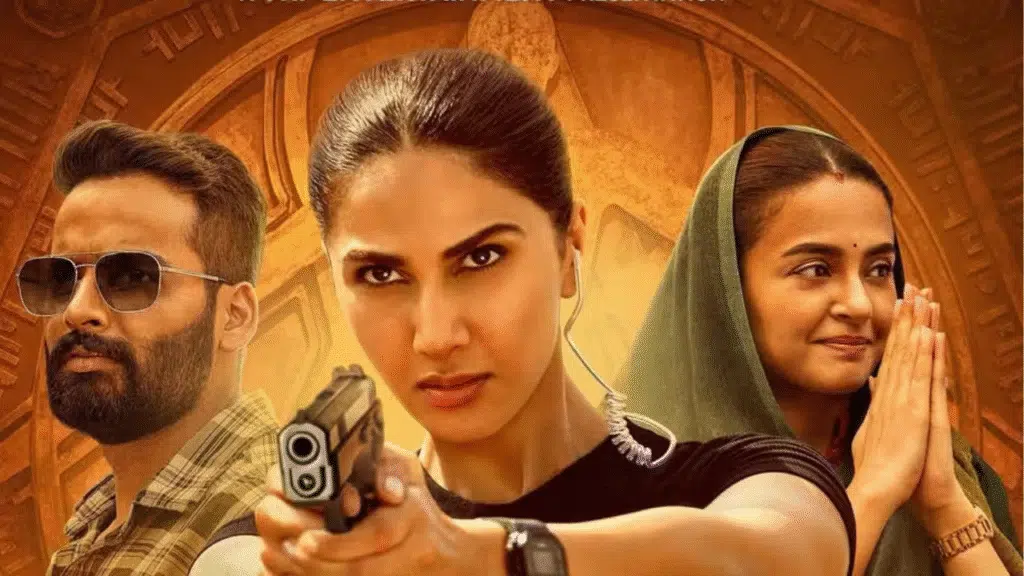The eerie symbol of the mandala. A severed thumb offered in exchange for miracles. A mysterious baba whose blessings come at a horrifying cost. Netflix’s latest thriller, Mandala Murders, pulls you into a chilling world of cults, secrets, and a town where faith hides a darker truth. But is this psychological crime drama inspired by real events?
The question has gripped viewers across India since the series premiered: Could this sinister tale of ritualistic killings and supernatural faith actually be true?
A Haunting Thriller That Feels All Too Familiar
Indian crime thrillers have often borrowed from reality—think Delhi Crime, Talvar, or Breathe. They draw us in with narratives rooted in emotional truths and societal fractures. Mandala Murders, though fictional, follows the same thread. Directed by Gopi Puthran and Manan Rawat, the series introduces us to CIB officer Rea Thomas (Vaani Kapoor) and suspended cop Vikram Singh (Vaibhav Raj Gupta), as they investigate ritualistic murders tied to an ancient cult in a town called Charandaspur.
As episodes unravel, so do questions: about faith, justice, power, and the legacy of colonial trauma. And as viewers dive deeper, many are left wondering—has something like this ever really happened?
Check Out: Mandala Murders Review: A Gripping, Haunting Thriller That Delivers More Than Just Chills
The Real Darkness Behind the Imagined Ritual

India’s cultural and religious landscape is as layered as it is complex. While Mandala Murders is not based on a specific real-life case, its setting and plot evoke chilling echoes of real events. Over the years, India has seen a string of news stories involving self-styled godmen, dangerous spiritual cults, and blind faith leading to horrifying outcomes.
Consider the infamous cases surrounding figures like Asaram Bapu or the Burari deaths in Delhi—each mired in mysticism, manipulation, and unquestioning devotion. These real events may not involve thumb-severing gadgets or occult symbols, but the underlying theme—how belief can be exploited for control—is disturbingly familiar.
Could Mandala Murders have drawn indirect inspiration from such cultural memories? Very likely.
The Baba, the Boon, and the Price of Faith
In the series, the central myth revolves around a baba who grants miracles—like curing disease or even reversing death—in exchange for a gruesome sacrifice: a severed thumb offered via a custom-built contraption. Each killing that follows mimics ritualistic sacrifice, all connected to the mysterious “Mandala,” a sacred symbol turned sinister.
While the gadget and the “boon-for-thumb” exchange are fictional devices, they metaphorically reflect the transactional nature of blind faith seen in many real-life cults, where people have been known to surrender money, property—or worse—for promises of divine intervention.
What Makes It Feel So Real?
It’s the world-building that truly makes Mandala Murders feel ripped from reality. From fog-drenched forest paths and dimly-lit temple ruins to the psychological torment of those involved, the setting of Charandaspur mirrors rural India in ways that are both beautiful and terrifying.
Director Gopi Puthran doesn’t rely on gore or fantasy. Instead, he leans into silence, visual stillness, and emotional unease to create horror. It’s the kind of slow-burn storytelling that burrows deep into your mind—like the best of Malayalam noir or Scandinavian crime dramas.
So, Is Mandala Murders Based on a True Story?
No, it isn’t.
But it does something even more powerful—it reflects a collective unease that exists in our society. The kind of unease born from real-world scandals involving fake godmen, secretive spiritual orders, and police cases buried under bureaucracy and fear.
The strength of Mandala Murders lies in how it blurs the lines between fact and fiction. It taps into the collective memory of a society familiar with trauma, belief, and betrayal—without being a direct retelling of any one event.
A Fiction That Feels Like Truth
In the end, Mandala Murders doesn’t need to be based on a true story. It captures the essence of truths we’ve lived, witnessed, or quietly feared. The ritual may be imagined, but the emotions it stirs—fear, rage, suspicion—are deeply real.
It’s not history. It’s not prophecy. It’s a reflection—and that might be the scariest thing of all.


